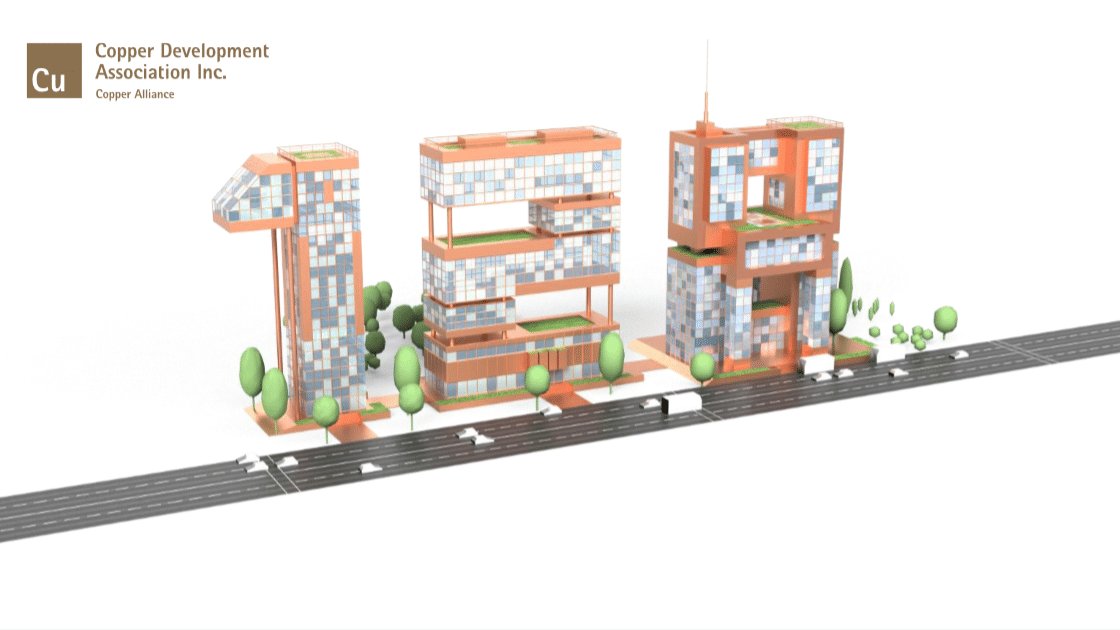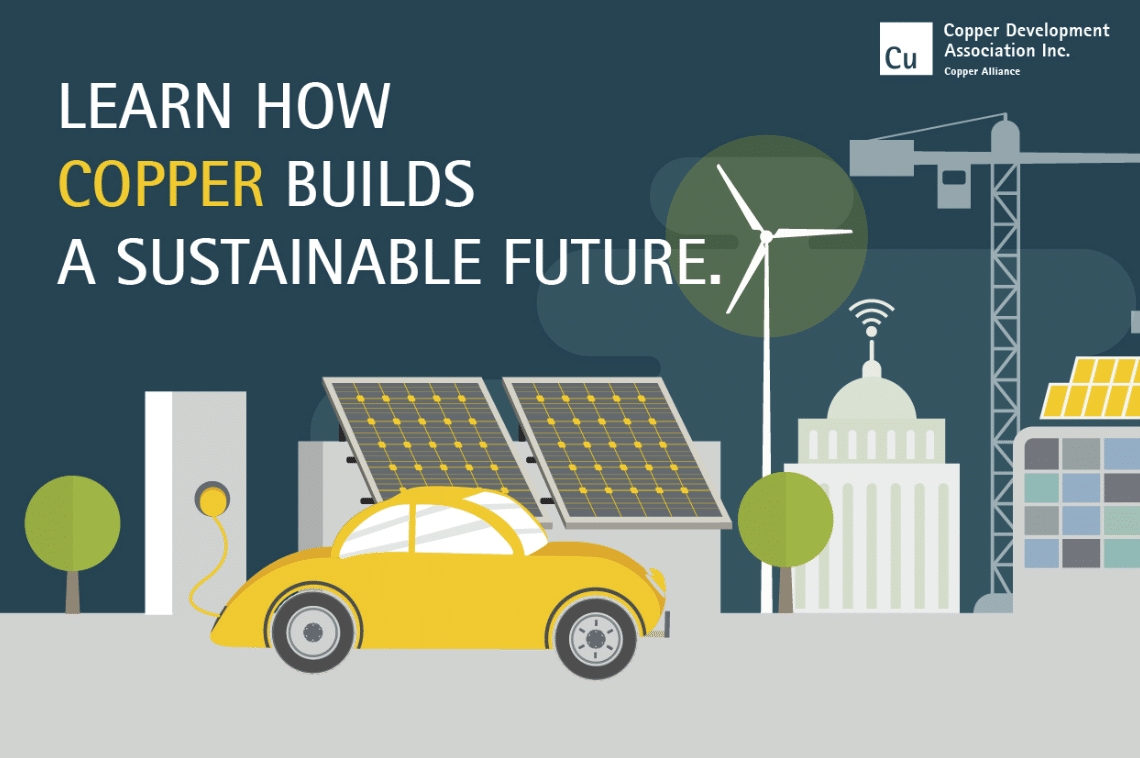Copper mining firms worldwide are committed to reducing their carbon emissions. Freeport-McMoRan, one of the world’s largest copper miners, lowered its carbon emissions by more than 21 percent from 2015 to 2019. This puts the company on track to meet the COP21 framework to limit global warming to below 2°C from pre-industrial levels by 2050.
Freeport achieved this dramatic reduction through a unique blend of advances in energy-efficient technologies, equipment recycling and clean-energy deployments at its operations in the Americas.
TACKLING A GLOBAL CRISIS: THE CARBON CHALLENGE
Challenges facing Freeport’s Americas division are particularly relevant. This division produces 70 percent of Freeport’s greenhouse gas (GHG) emissions. Between 2012 and 2016, operations in the Americas division experienced a decrease in ore grades, a common issue in the copper mining industry. As a result, the company needed to extract and process larger volumes of ore from greater distances to maintain production levels. Freeport-McMoRan has worked to strategically address this challenge through technological innovation to reduce carbon emissions.
CUTTING EMISSIONS WITH CUTTING-EDGE TECHNOLOGY
High Pressure Grinding Rolls
The company introduced new high pressure grinding roll technology at its mines in Cerro Verde in Peru—the largest copper concentrating facility in the industry—and Morenci in Arizona between 2014 and 2016.
The grinding rolls work by meshing rocks together at a high force, making them smaller than those produced by conventional mills that use steel balls to break down rock. These high-pressure grinding mills are 20 percent less energy intensive than traditional mills, and they substantially reduced GHG emissions while increasing production at both mines.
On-Site Efficiency with Electrowinning
Freeport also established a new technique that applies electrowinning to sulfide concentrates. This technique involves a concentrate leach process and replaces the conventional smelting and refining of copper. This new process allows several operations essential to copper processing to be done on-site rather than requiring additional transportation and energy expenditure.
Unlike traditional operations, Freeport’s electrowinning technique allows the company to convert molybdenum concentrates into molybdenum oxide—an intermediate molybdenum product—on-site instead of sending it to roasting facilities for processing. Moreover, the technology enables an on-site supply of sulfuric acid for oxide leaching operations, which further eliminates shipping costs. These critical changes have produced major reductions in energy requirements and carbon emissions.
Miles that Matter
Equipment efficiency and longevity is key to reducing carbon emissions, and Freeport is re-examining the foundations of its operations. Freeport is reconstructing its haul trucks to operate for an average of 100,000 hours, more than 20,000 hours over the standard life cycle of trucks in the industry. The company has partnered with Caterpillar dealer Empire Cat to rebuild 465 trucks in total since 2008. Technicians restructure engines, frames and truck beds, allowing Freeport to reuse approximately 70 percent of its fleet. This strategy enabled Freeport to conserve over $1 billion in capital. In 2019, for example, the reuse of 12 haul trucks saved an estimated $60 million.
For each reconstructed truck, Freeport decreases carbon emissions by 325 metric tons. The program has achieved a total reduction of more than 150,000 metric tons over a 10-year period.
Freeport has implemented an innovative program using the Internet of Things (IoT) to enable supervisors in remote control rooms to track and analyze, in real time, environmental conditions and truck and driver performance. This program helps technicians make preemptive changes to increase productivity. According to McKinsey, it allows the trucks to run for 15 percent more time per day than is standard in the industry. This increase in capacity has allowed Freeport to maintain a smaller fleet, reducing carbon emissions from an additional 50 trucks.
In addition to the technical advances to the vehicles themselves, Freeport has initiated several recycling initiatives for its vehicle tires. At Minera El Albra in Chile, a pilot program in 2018 allowed the company to reuse 31 mining equipment tires, reducing the need for 26 new tires. This cut led to a 35 percent decrease in CO2 emissions, or 53 tonnes.
A CLEANER WORLD
A Shift Toward Renewables
In partnership with ENGIE Chile, renewable energy will power 100 percent of Freeport’s Chilean El Abra mine’s on-site electrical requirements by the end of 2021. This gradual replacement of coal-fired power accomplishes the goals spelled out in the country’s COP21 agreement and is enshrined in its nationwide energy priorities.
In 2018, Freeport raised the amount of purchased power from renewable and low carbon sources to 83 percent, a 3 percent increase from the previous year. That year, renewables provided 36 percent of purchased power. Meanwhile, between 2014 and 2019, grid decarbonization led to an additional decrease in GHG emissions from electricity use in Arizona and Peru.
Heat and Solar Power
In Arizona, creative solutions, such as using surplus heat from the sulfur burner at Freeport’s Safford project, makes operations even more sustainable. By using surplus heat, the Safford project generates as much as 15 Megawatts (Mw) of energy for constant use at its processing operations.
At the Miami complex in Arizona, officials have also engaged with a utility partner to introduce a 100 Mw solar plant in 2021 that will supply 5 percent of the yearly electrical requirements.
Wind Power
Following a 2018 agreement, Freeport’s Morenci operations in Arizona will receive 14 Mw of wind power from Wyoming for electricity.
Freeport’s technological solutions to common mining challenges will pave the way for mining practices not only in the Americas but across the world.
Reducing emissions and improving our energy efficiency provides us with cost savings and environmental benefits within and beyond our operating boundaries.” – Richard Adkerson, CEO Freeport-McMoRan
ADVANCING WITH DATA
Freeport has prioritized a data-driven approach to become more energy efficient. To calculate its emissions more precisely, Freeport has contributed numerous scientific studies on its operations and the wider industry. By implementing this knowledge, Freeport has become a top performer in the industry’s reduction of GHGs.
Progress from Precision
Prior to 2018, Freeport relied on estimates based on grid factors from the United States Environmental Protection Agency (EPA) to measure its delivered electricity. Moving forward, the company has broadened its analysis by incorporating data from its suppliers and utility providers. This strategy enabled Freeport to calculate its electrical GHG intensity more accurately by reporting actual emissions as opposed to estimates solely based on regulatory reports.
In 2019, company officials conducted a comprehensive study of GHG emissions across the Americas. This study gathered data from active copper mines, smelters and refineries in the Americas over the previous seven years, and researchers found these entities represented 60 percent of total GHG emissions.
Making a Difference
This 2019 study prompted Freeport to make technological improvements to reduce GHG emissions, resulting in a 17 percent reduction since 2015. The new data from suppliers and providers reflected a further 4 percent reduction, delivering a 21 percent improvement in emissions. Moreover, the 2019 GHG emissions per tonne of copper cathode were a full 30 percent lower than the Business as Usual (BaU) projections.
By 2030, Freeport forecasts the company will achieve an additional 15 percent reduction in carbon emissions for each metric tonne of copper produced in the Americas relative to 2018 levels.
Whether through its sustainable strategies like reusing trucks, developing new mining techniques, implementing advanced grinding technology or employing creative project-based clean energy initiatives, Freeport McMoRan believes in doing its part to bring about a more green and sustainable mining industry.
About Freeport-McMoRan Inc.
Based in Phoenix, Arizona, Freeport-McMoRan operates large, long-term, geographically diverse assets of copper, gold and molybdenum and is the world’s largest publicly traded copper producer. Its mines include the Grasberg district in Indonesia, one of the world’s largest copper-gold deposits, and major operations in North and South America, encompassing the large-scale Bagdad and Morenci minerals districts in Arizona, the Cerro Verde operation in Peru and El Abra in Chile.
About the Copper Alliance®
The Copper Alliance is a network of regional copper centers and their industry-leading members. It is responsible for guiding policy and strategy and for funding international initiatives and promotional activities. Headquartered in Washington, D.C., the organization has offices in three primary regions: Europe, Asia and North America. The Copper Alliance has partnerships and programs in more than 100 countries.

